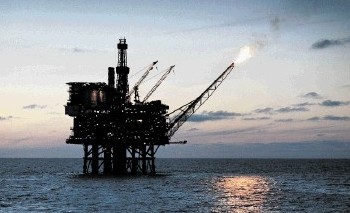
Carbon emissions from across Europe could soon be buried under the North Sea – with Peterhead at the centre of the Continent’s green energy revolution.
A vision of the north-east leading the world in carbon capture and storage (CCS) has been outlined in a new report by Scottish Enterprise. The study found that the depleted oil and gas reservoirs in the waters off Scotland’s east coast offer an “unmoveable and unique advantage” to develop CCS.
A quarter of the EU’s carbon dioxide emissions could be stored there by 2050, the Scottish Government agency concluded, using existing and newly-built North Sea pipelines.
Peterhead would become the main shipping port in Europe for storing the greenhouse gases – with an investment of up to £100million paving the way for the creation of 500 jobs and drawing £140million into the local economy.
The report also adds weight to the bid by Shell and Scottish and Southern Energy (SSE) to base a CCS demonstrator plant at Peterhead’s gas-fired power station.
The UK Government is expected to announce within weeks whether the project will be awarded a slice of a £1billion CCS fund.
The Scottish Enterprise study suggests that funding the Peterhead project – alongside two other North Sea-based schemes, at Grangemouth and in South Yorkshire – would “form the foundations of a durable and highly scalable cluster, which can service all UK needs and has European impact”.
It concludes: “In short, a decision by the UK Government to provide capital support to projects in the central North Sea will represent the first step in the faster route to a commercially viable, cost-competitive CCS industry in the UK and a future-proof storage asset for Europe.”
David Rennie, director of oil and gas and CCS at Scottish Enterprise, said: “The offshore geography of the central North Sea gives us a unique advantage in developing CCS capabilities, which has huge potential for the Scottish economy. Much of the infrastructure and skills to develop CCS is already in place in Scotland thanks to our globally renowned oil and gas sector. The challenge now is to make sure we fully exploit these advantages to develop a reputation for Scotland as a world leader in this area.”
Energy Minister Fergus Ewing welcomed the report yesterday. “CCS technology has the potential to transform the way we generate power and make an important contribution to Scotland’s low-carbon future, and Scotland is well placed to take a lead in its development and commercialisation,” he said. The Scottish Enterprise blueprint envisages the Peterhead, Grangemouth and South Yorkshire CCS schemes being connected by 2020.
By 2030, other new and existing power-generation plants would be connected to the North Sea.
A “shipping hub” would be developed at Peterhead deepwater port, enabling 20,000-tonne and larger tankers to bring in CO2 from Rotterdam, Teesside, the Forth cluster and decentralised parts of the UK, the report predicts.
It suggests that, by 2050, interconnector power cables would run from Peterhead and Hunterston to England, with a third of the electricity coming from wind power and two-thirds generated by gas power stations linked to CCS, while CO2 from Scandinavia and mainland Europe would be shipped to Peterhead.
Responding to the calls for funding for North Sea-based CCS schemes, a spokesman for the UK Government’s Department for Energy and Climate Change said: “We have received a good range of applications and are assessing and evaluating the bids.”
“We’re on track to take decisions on which projects to support further in the autumn.”
Recommended for you
